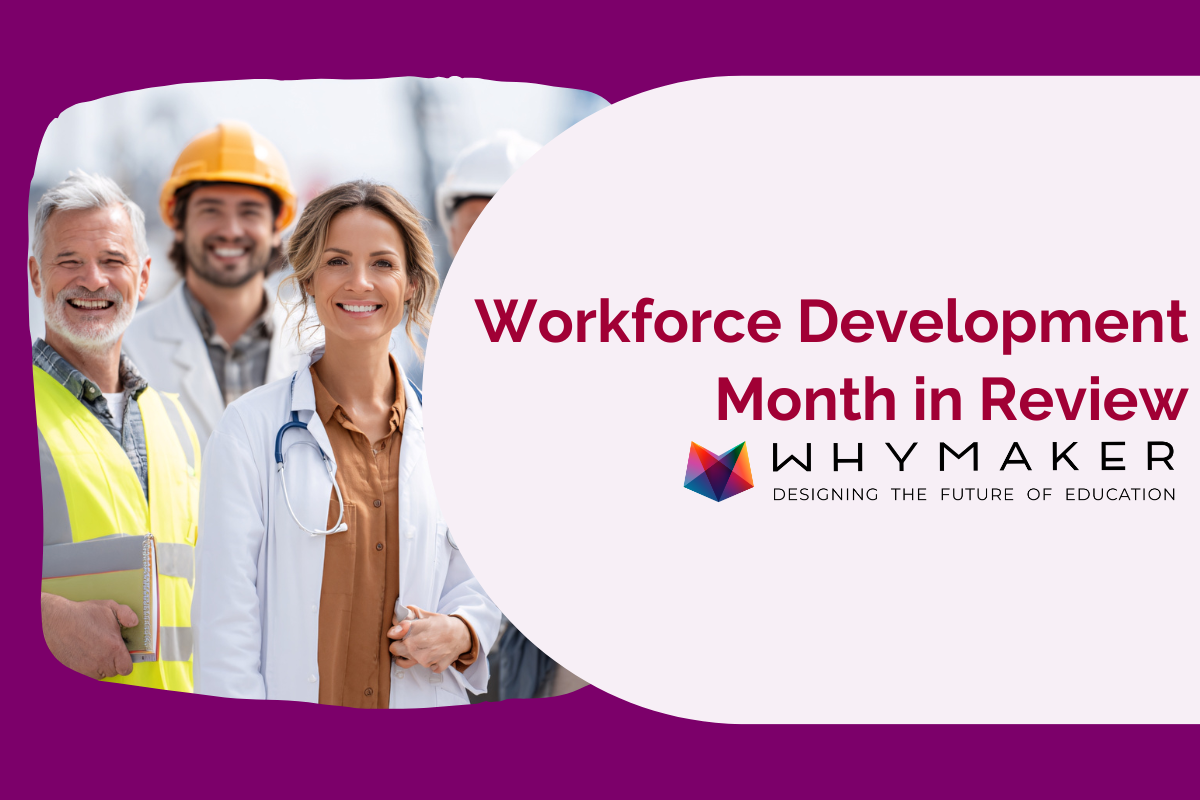Each September, the National Association of Workforce Development Professionals (NAWDP) leads Workforce Development Month, a national campaign to spotlight the role of workforce professionals in building stronger communities and bridging talent to opportunity.
As we move into October, the message still resonates: the talent needed by our industries doesn’t emerge overnight. It begins in schools, with thoughtful partnerships, early exposure, and alignment between what students learn and what employers need.
The Tension: Millions Jobless, Millions of Openings
The numbers are striking. In August 2025, the U.S. recorded 7.4 million unemployed individuals, even as job openings remain close to that level.* This mismatch underscores a talent pipeline challenge: it’s not enough to have jobs available; we must prepare people for them.
Workforce development is about more than placing people in jobs today. It’s about building sustainable pathways (education, training, support, and opportunity) that align with evolving industry needs.
Where WhyMaker Comes In
At WhyMaker, we see a unique role for education–industry partnerships in strengthening workforce outcomes:
-
Early exposure to real-world industries and jobs helps students see that a career in manufacturing, energy, or tech is reachable, not abstract.
-
Standards-aligned educational tools with industry stories close the gap between what students learn and what industries expect.
-
Collaboration with workforce professionals and districts ensures that K–12 efforts are not isolated but integrated with local and state workforce strategies.
During Workforce Development Month, NAWDP provided a toolkit to support messaging, media engagement, and advocacy from workforce professionals.
Turning Workforce Development Month into Action
Here’s how we can turn the spirit of Workforce Development Month into meaningful steps, even after Workforce Development Month ends:
-
Highlight success stories
Share stories of students who discovered a STEM or manufacturing path early, especially those from underrepresented communities.
-
Engage local workforce agencies
Collaborate with regional workforce boards or nonprofits. Invite them into schools or co-host events that align training programs with K–12 learning.
-
Offer classroom-accessible “industry in a box” resources
Provide toolkits, video modules, or products that simulate real work tasks in energy, manufacturing, or engineering. These help translate career awareness into hands-on experience.
-
Align messaging with workforce & industry trends
When we talk about “future careers,” “sustainability,” or “innovation,” we tie school-level learning to the real economy. That helps teachers, students, and district leaders see the relevance.
-
Build scalable classroom-to-career pathways
Workforce development isn’t a one-off campaign—it’s about consistent exposure from the classroom to the workplace. WhyMaker is already working with corporations, nonprofits, and agencies to design standards-connected lessons, career awareness modules, and hands-on STEM products that fit directly into classrooms. By bridging industry needs with K–12 education, we help employers grow tomorrow’s talent while giving students equitable access to career pathways.
Although Workforce Development Month is over, the challenge remains: how do we make the collaboration of classrooms and companies permanent, not just momentary?
If you’re a business leader, school district, or workforce stakeholder, let’s talk. WhyMaker can help translate industry expertise into classroom tools, pilot projects, and sustainable education partnerships.
📩 Contact us to explore a collaboration
Sources: Bureau of Labor Statistics







